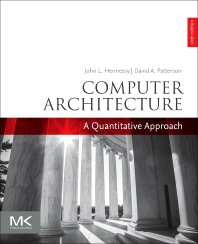Books in Computer systems organization general
Books in Computer systems organization general

High Performance Computing
- 2nd Edition
- Thomas Sterling + 2 more
- English

Computers as Components
- 5th Edition
- Marilyn Wolf
- English

Computer Organization and Design RISC-V Edition
- 2nd Edition
- David A. Patterson + 1 more
- English

Computer Organization and Design MIPS Edition
- 6th Edition
- David A. Patterson + 1 more
- English

Advances in Delay-Tolerant Networks (DTNs)
- 2nd Edition
- Joel J.P.C. Rodrigues
- English

Embedded System Interfacing
- 1st Edition
- Marilyn Wolf
- English

Hardware Security
- 1st Edition
- Swarup Bhunia + 1 more
- English

High Performance Computing
- 1st Edition
- Thomas Sterling + 2 more
- English

Computer Architecture
- 6th Edition
- John L. Hennessy + 1 more
- English

Real-Time Programming 1992
- 1st Edition
- J.A. De La Puente + 1 more
- English